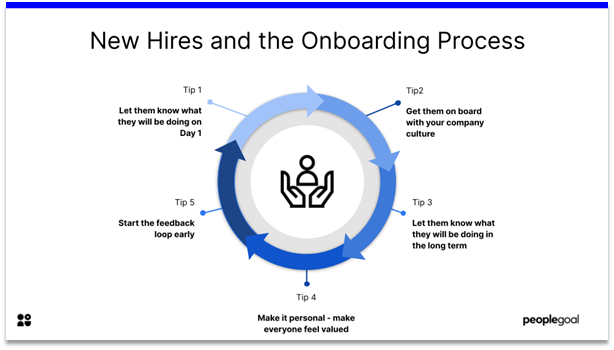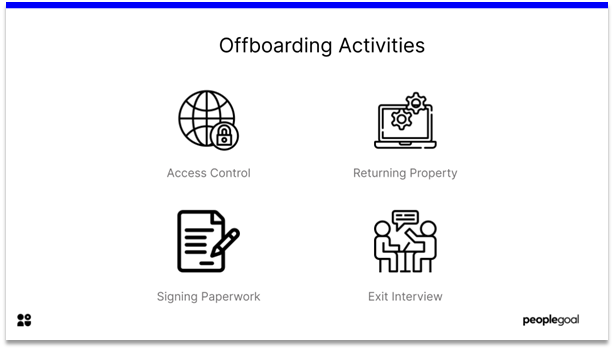It’s been said that first impressions last a lifetime. While this phrase may be used most frequently in reference to personal relationships the sentiment rings true for businesses as well. Depending on your industry, the interaction you have with the general public may vary and customer relationship management is a whole science in itself. But regardless of industry, company size or customer base, there is a first impression that you have a large amount of control over – potential candidates and new hires.
The best and brightest will likely have done some research on your organization, whether in preparation for an interview or in evaluating your offer. But when interacting with you for the first time, whether for an interview or for their first day of work, they are still in an impressionable stage – briefly. So how can you take advantage of this phenomenon to attract and retain engaged employees?
Job Candidates and the Interview
In an increasingly competitive talent market, candidates are evaluating you as you evaluate them.

Make it streamlined – There’s usually a fair amount of coordination required in setting up an interview and anything to make it simpler will always be appreciated. Services like Calendly can help you easily schedule a perfect time. Be sure to provide clear directions and any other logistical information as appropriate.
Give it structure – There are many formats to interviews. While you want to elicit genuine responses, too many surprises can lead to frustration. Letting candidates know the basic structure and schedule, ahead of time if at all possible, can help an interviewee feel comfortable but still gives you flexibility to throw in your favourite curveball question.
Be Prepared – Just like an interviewee should have done some research on your organization, you’ll want to know a little more about them from publicly available information. But beyond the background check, be prepared for the tough questions turned back in the other direction – “Why do you like working here?” and “What’s your least favourite part about this position?”
Set the tone – Does your interview style match your business philosophy? There are definitely times to be more formal and others to be informal, but the interview will be one of the first glimpses a candidate has into what people are like in your organization.
Keep them informed – Especially in longer interview processes, letting the candidate know where they are in the timeline can be the difference between getting the best fit and losing them to another offer. You can make use of an applicant tracking system to send automated reminders and rejections, but don’t forget to add a personal touch every once in a while.
New hires and the employee onboarding process
While they may not be your direct report, encouraging a culture of support from Day 1 can convert an employee into an advocate.

Let them know what they will be doing day 1 – The first day can set the tone for an entire career. And while there may be a limit to how much you control the chaos, the best thing you can do is set expectations. Lay out the quick wins that will be get them up and running and performing right out of the gate. A schedule and checklists are great, but find a way to communicate what’s most important and to remind them they are here because they are a good fit, even if there is an adjustment period short term.
Don’t just onboard; get them on board – Even in fast-paced environments it’s unlikely a new hire is going to be 100% productive the during the first day or week. But if you can get them to buy in to your core values and culture from the beginning, you’ll likely get even higher performance down the road. That means you have to present and reinforce your culture from the start. It’s even better if you can show it in practice – lead by example!
Let them know what they will be doing long term– While work expectations differ, you can define the basic outline of a role progression to give an idea of how expectations will evolve. What should this person being accomplishing in their first month? First quarter? First year? Even if you’re still working on your role definition, this is a good opportunity to start helping them set goals that set them up for success. Check out our guide for you to learn how to set SMART goals.
Make it personal – We all want to feel valued and even if you have hundreds of employees starting on the same day, it’s possible to add personal touches that show they aren’t just a number. A personal tour, a nice letter from a manager, or scheduling a coffee break before the big day begins are just a few ideas. How would your perfect first day go?
Start the feedback loop early – It’s hard to manage employee expectations if you don’t know what they are. Ask for feedback right away about what went well in the interview and in the onboarding process. This will help to cultivate a culture of continuous feedback and prove to them that their opinions are heard and appreciated, even early on.
Offboarding and the Exit Interview
Finally, although we’ve spent a good deal of time discussing the first impression, a last impression is also something that deserves consideration. Exit interviews can be difficult conversations but often provide deep insights into what went well and what can be improved. Of all of the offboarding activities – access control, returning property, signing paperwork – a 15 minute conversation may give you the most honest and unbiased feedback you could ask for. Although you can only do so much to retain employees, someone who believes in your brand can be an ambassador for life. Glassdoor has a great list of the most important questions to include in your exit survey.

Ready to learn more about how you can manage an employee lifecycle from onboarding to the exit interview? Get in touch here for a free consultation or demonstration on how PeopleGoal can improve your employee experience.
Ready to 3x Your Teams' Performance?
Use the best performance management software to align goals, track progress, and boost employee engagement.



